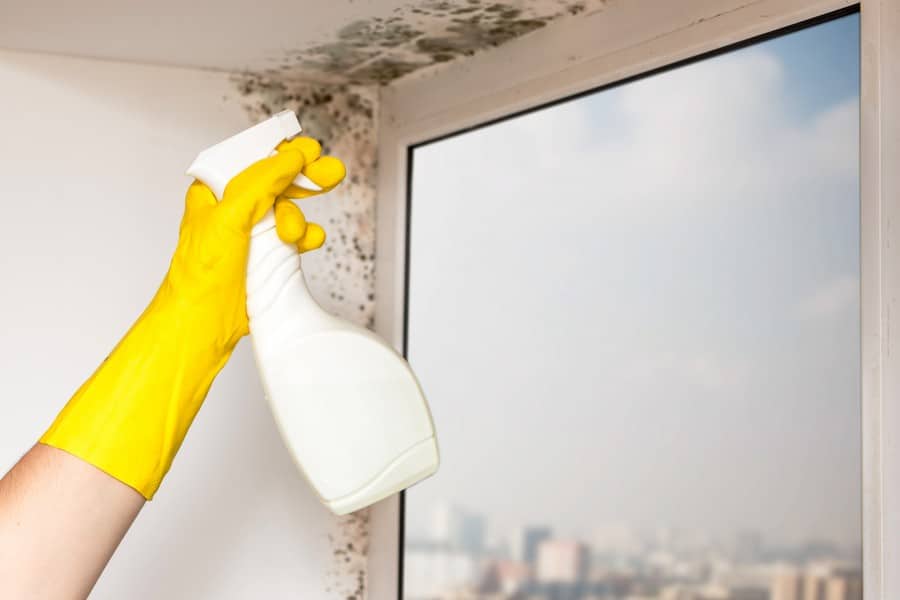Moisture or water that has seeped from the exterior into the interior of a building is referred to as lateral damp or penetrating damp and is one of the most prevalent sources of damp in older structures. Still, it can occur in homes of any age and at any level of the building. This usually occurs when there is a hole or a leak in the building’s external sections, such as the brick or stone walls, which have deteriorated and become porous, allowing water to leak into the interior.
Penetrating damp, often known as “rain penetration,” results from excessive water invading a home through an external wall.
What Are The Most Common Penetrating Damp Causes?
Building faults or poor workmanship in the roof coverings, leaky rainwater pipes, or inadequate ceilings of the doors and windows can all contribute to penetrating moisture. When the outer material begins to deteriorate, water is able to infiltrate through the walls, causing penetrating damp.
This can happen because of a building flaw, or because external brick or stone walls have decayed to the point where they have become porous due to age or negligence. The external brickwork can deteriorate with time, allowing water to permeate a home. It can penetrate via walls, roofs, windows, or door surrounds at any level of the property and can also be caused by roof tile flaws, broken pointing, blocked weep holes, or faulty seals, allowing water to penetrate through the external wall into the residence.
Frost or age, as well as physical damage from natural occurrences such as storms and extreme weather, are the leading causes of penetrating damp in some buildings.
How To Spot Penetrating Damp?
Fortunately, there are a few markers that might help you identify penetrating damp quickly. Keep an eye out for the following:
- A musty smell, damp odour
- Internal wall damage (skirting boards) or external wall damage (roofing)
- Damp patches and patchy black mould on the walls
- Watermarks on stonework
As a result of being penetrated by damp, the wood was already damaged (which could have the potential of providing the ideal conditions for a wood rot fungus to germinate).
What Areas Are Susceptible To Penetrating Damp?
The following are some common places to look for penetrating damp:
Penetrating Damp Through The Roof
Missing tiles, pointing, roof ridge tiles (the curved tiles at the very top of the roof), and flashing (the point where a roof meets a wall or a chimney) are all essential spots to check for penetrating damp on a roof. If any of these are missing or loose, maintenance is required to prevent or halt penetrating moisture.
Penetrating Damp Through Frames On Windows
These must be examined to see if any gaps or cracks exist around the frame. If there are any, a flexible frame sealant should be used to fill them. If one does exist, check sure it hasn’t been filled in, and if it hasn’t, a hardwood strip, 35mm from the front edge is a good alternative. Also, look under the window sill for a “drip groove,” which is a groove designed to keep water from running onto the wall.
Penetrating Damp Through Frames Supporting Doors
Any cracks in the door frames will need to be repaired. Furthermore, if your external door lacks a weather bar – a board that lies at the bottom of the door and protects it from excessive rain – it may be time to consider installing one.
Penetrating Damp Through External Walls
Penetrating damp can be caused by cracks in external brickwork or missing bits of mortar (the infill – cement or otherwise – between bricks). If this is the case, ensure sure the holes are filled with the proper filler material. The brickwork or external render might become porous or crack, allowing rainwater to seep between the cracks.
Penetrating Damp Through Rain Gutters, Downpipes And Other External Drains
Check the status of your rainwater goods that are located outside. If they’re leaking, your home could suffer from penetrating wetness. Drains should be inspected to ensure they are not clogged, allowing water to back up into the structure.
It’s also possible that cracked or porous older chimney heads have allowed water into your property. These must be fixed or painted with an exterior silicone water repellent or lime wash that allows your walls to breathe while still allowing them to breathe. This also serves as an excellent preventative strategy; it’s preferable to catch an issue early on and save money than to deal with a much more expensive fix later.
How To Treat Penetrating Damp?
Establishing and correcting the cause of moisture/water ingress is the most critical step in penetrating damp treatment. The most likely source of penetrating damp is a problem with the building. Even in new construction, there are on average four potential points of water entry that can impact a home:
- Pointing that isn’t well done
- Brickwork with pores
- Render with cracks
- Rainwater disposal systems that are defective
All of these points must be kept in excellent shape, and any problems must be addressed.
To keep the masonry from being saturated, problems must be resolved as soon as possible.
Can Cavity Wall Insulation Be A Cause For Penetrating Damp?
Cavity wall insulation is very common these days because it enhances the home’s heat retention.
Most houses built in the United Kingdom after 1920 have cavity wall construction on their exterior walls. The cavity wall is made up of an inner wall that surrounds the building’s interior and an exterior wall that can be rendered, painted, or pebbledash. A space or cavity is left between the two walls to protect the interior walls from penetrating moisture.
In recent years, damp has been detected in homes that have hollow wall insulation. When penetrating damp penetrates the exterior wall, it is transferred via the hollow wall insulation and affects the property’s internal walls.
Many homeowners have had their cavity wall insulation fail, and if this is the case, the insulation may need to be removed.
Can Penetrating Damp Cause Health Issues?
If the penetrating damp problem is resolved promptly, the health impacts of penetrating damp should not be a concern. As previously stated, the primary indicators of penetrating damp are a musty odour and stains on the walls, which, while unsightly, do not pose a health danger.
It is not ideal to live in moist conditions, and damp problems should be resolved as soon as feasible. Condensation troubles can arise due to severe penetrating damp conditions, with black mould being one of the signs.
What Kind Of Harm Might Penetrating Damp Cause To Your Property?
Even if it does not permeate through a wall, penetrating damp can cause damage to a home. Other damp-related problems include wet and dry rot, damp plasterwork, increased heat loss, damp, musty odours, frost damage to masonry, and unattractive water damage on both the outside and inside of a building.
Requesting a Penetrating Damp Survey
Are you unsure whether the mould you’re witnessing is the result of condensation, a leak, lateral damp, or rising damp? Do you want to know how bad the water damage is and what steps you should take to fix it? We can help by conducting a damp survey and preparing a report.
At Sussex Damp Experts, we can assess the severity of the problem and recommend a treatment approach based on our knowledge and moisture monitoring equipment, ensuring that your property gains damp-proof walls.
How Long Does A Penetrating Damp Survey Take?
The size of the property, kind of building, type of damp problem, and degree of damage are all factors that determine the length of a dampness survey. A rainy survey, for example, will take three to four hours to complete on average. For further information, don’t hesitate to get in touch with us.
Expected Cost Of A Penetrating Damp Survey
Moisture mapping is used in our studies to establish the scope of your damp problem. Then we look into the most likely reasons and solutions and report on them. The cost is determined by a variety of circumstances, and each situation must be thoroughly evaluated before a reasonable estimate can be supplied.
An email report with the survey data, conclusions, and recommendations is included with our damp investigations.
If you’d like to speak with one of our damp surveyors about any of your concerns or problems with a building, please get in touch with Sussex Damp Experts customer care. We’d be delighted to speak with you openly and honestly about the issues to offer you the information and knowledge you require to proceed with your request.


